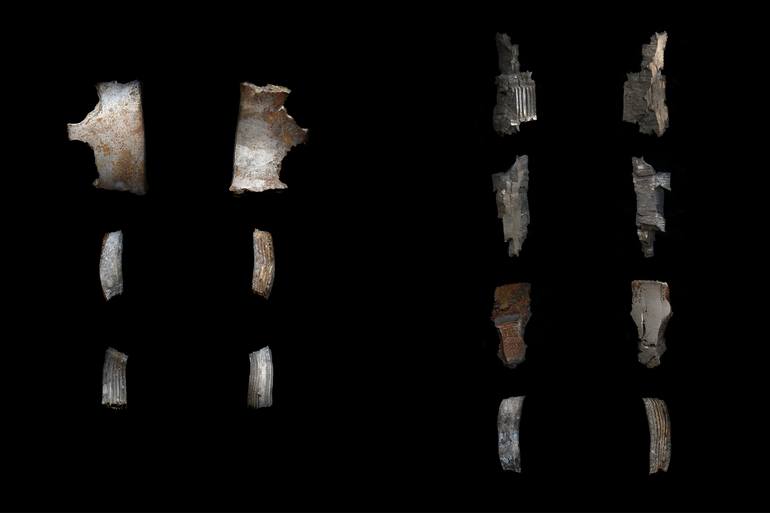


187 Views
0
View In My Room
Photography, Color on Paper
Size: 30 W x 20 H x 0.1 D in
Ships in a Tube
187 Views
0
Artist Recognition

Artist featured in a collection
ABOUT THE ARTWORK
DETAILS AND DIMENSIONS
SHIPPING AND RETURNS
The photo is the part of the project "Fragments of War". Life size scans of munition fragments found in the territory of the Donbas, with grooves and bends, whose sharp edges can easily kill or maim anyone on their way from the barrel to the place of impact and spalling. Each fragment has its own hi...
Year Created:
2015
Subject:
Styles:
Mediums:
Mediums:
Photography, Color on Paper
Rarity:
Limited Edition of 1
Size:
30 W x 20 H x 0.1 D in
Ready to Hang:
Not Applicable
Frame:
Not Framed
Authenticity:
Certificate is Included
Packaging:
Ships Rolled in a Tube
Delivery Cost:
Shipping is included in price.
Delivery Time:
Typically 5-7 business days for domestic shipments, 10-14 business days for international shipments.
Returns:
The purchase of photography and limited edition artworks as shipped by the artist is final sale.
Handling:
Ships rolled in a tube. Artists are responsible for packaging and adhering to Saatchi Art’s packaging guidelines.
Ships From:
Ukraine.
Customs:
Shipments from Ukraine may experience delays due to country's regulations for exporting valuable artworks.
Need more information?
Need more information?
Dmytro Kupriyan
Ukraine
Worked as a photojournalist at news agencies and later started to work on the topic of tortures doing a photo project about violence in ukrainian police (project "TORTURED") and aftermath of it. Then he shift his camera to topic of violence in wide meaning of it making a projects about war in Ukraine (projects "Fragments of War", "Banality of Aggression" and "WHEN THE WAR IS OVER") and later as a conclusion he moved to the topic of dialog in society as a reconciliation making a video about necessarines of Dialog trying to show that the only way to solve the problems and misunderstanding in societies is the dialog in all meaning of it: verbal, subverbal, physical, etc. Also he is interesting in ukrainian historical shipping and sailing on the chaika (name of an old national Ukrainian boat) “SPAS”, built in 2007 by a group of national enthusiasts. He went on a lot of trips over Dnipro river and Black Sea and made a set of photographs about that. On the boat he served as sailor, boatswain, motorist and made a lot of wood works. In 2015 he serve a year in army photographing during the Ukrainian-Russia conflict in Donbass.
Artist Recognition

Artist featured by Saatchi Art in a collection
Why Saatchi Art?
Thousands of
5-Star Reviews
We deliver world-class customer service to all of our art buyers.
Global Selection of Original Art
Explore an unparalleled artwork selection from around the world.
Satisfaction Guaranteed
Our 14-day satisfaction guarantee allows you to buy with confidence.
Support Emerging Artists
We pay our artists more on every sale than other galleries.
